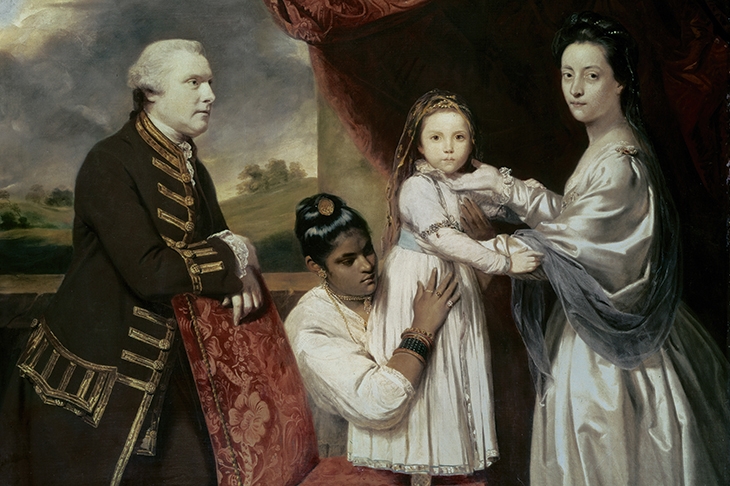Objectivity seems to be difficult for historians writing about Britain’s long and complicated relationship with India, and this makes the even-handedness David Gilmour achieves in books such as The Ruling Caste both unusual and welcome. In his enlightening and wonderfully detailed new portrait of The British in India, he states that he is ‘not seeking to make judgments or to contribute to any debate about the virtues and failings of imperialism’, although a brief Envoi supplies some ‘concluding reflections’ on what he acknowledges is a controversial subject. His is a social rather than a political history, focussing on what used to be known as Anglo-Indians not as mere representatives of colonialism but as ‘individuals trying to deal with the eternal problems of human behaviour and relationships’.
As Gilmour acknowledges, ‘India’s chief allure for Europeans of the 18th century was its wealth and the chance of getting their hands on some of it’. The usual way of doing this was as a servant of the East India Company (EIC). Equally ruthless trading and warfare characterised the early period of the British presence in India, and by the 1770s the EIC had its own large army, recruited from local people but commanded by British soldiers.
Originally formed to guard the Company’s properties and interests, it was subsequently used to expand its territories. As it conquered kingdoms, its merchants and accountants were increasingly obliged to combine ‘executive duties with private commerce’, and the Indian Civil Service was created to provide administrators. Gradually, alongside soldiers and Civilians (as members of the ICS were known), people began to come to India as engineers, foresters, planters, canal and railway builders, doctors and nurses, policemen, painters and missionaries, many of them leaving vivid accounts of their lives there.
Gilmour draws upon a wealth of both published material and unpublished official documents, letters, diaries and memoirs, and arranges his book thematically rather than chronologically, so that one gets a fascinating sense of how people from very different generations reacted to India.








Comments
Join the debate for just £1 a month
Be part of the conversation with other Spectator readers by getting your first three months for £3.
UNLOCK ACCESS Just £1 a monthAlready a subscriber? Log in